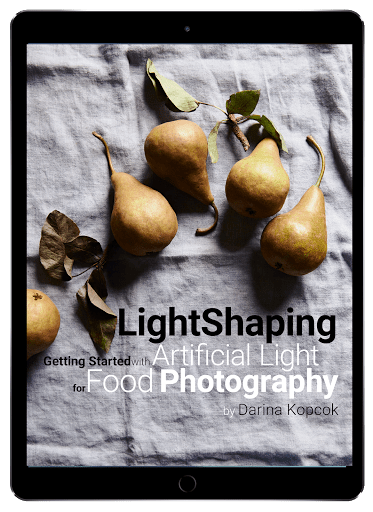
What if you never had to worry about your light again?

What if your photo shoots could go like this ...
You can visualize how your light is going to look before you pick up the camera.
Know the camera setting you need to get the shot no matter where or what you’re shooting.

Have an understanding of where to place shiny items like cutlery and glassware to reduce unwanted reflections.
After reading this guide you'll ...
Understand how to …
-
- Troubleshoot your light to make it dynamic instead of dull
- Choose the right modifier for your food story
- Know exactly where to place your lights to get the look you want
- Apply the Inverse Square Law to manipulate the quality of your light
- Position reflective items like glass and cutlery and avoid hot spots on your food
- Create hard or soft light no matter what equipment you’re using
- Take control of your camera settings to get the correct exposure with flash or continuous light
Be able to …
-
- Take control of your shadows to create evocative images with depth and emotion
- Shape your light source to create mood
- Effectively light a large tablecape (it’s not how you think)
- Shoot with multiple lights
- Mix flash with ambient light
- Make informed decisions about the gear you need for your food photography
- Mimic window light so even a pro won’t be able to tell if you shot the image with natural light or artificial light
LightShaping: Getting Started with Artificial Light for Food Photography.
Sick and tired of chasing the sun?
Know that artificial light can make all the difference but don’t know where to start? Get ready to change your photography life!
With 150 pages of content, this eBook has everything you need to take your food photos to the next level with artificial light.
Special Offer:
$47
*VAT may apply
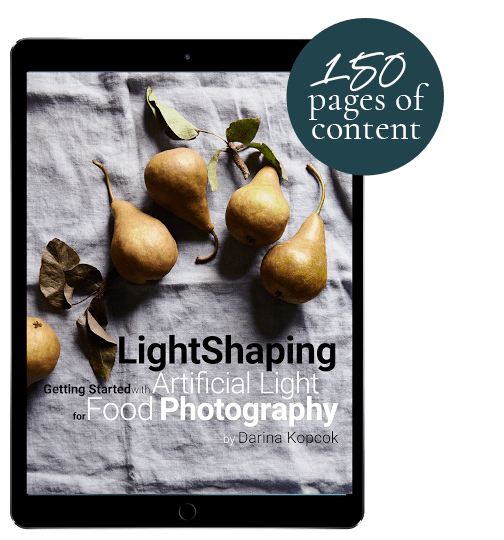

Imagine if you could…
-
- Take your food photos at any time of day, even in the winter time or after your kids have gone to bed
- Shoot images that mimic window light so beautifully no one can tell if they were shot with natural or artificial light?
- Understand how to get the perfect exposure every time
- Take pour and splash shots without having to worry about blurry photos and digital noise
- Photograph glassware without ugly and distracting reflections
- Shoot with artificial light without having to invest $$$ in a ton of expensive gear
What’s included in LightShaping?
1. Introduction
5. Shooting with Artificial Light.
2. Glossary
6. Lighting Set-Ups
3. Understanding Light
7. Creating Mood
4. Lighting Equipment
8. Lighting Equipment
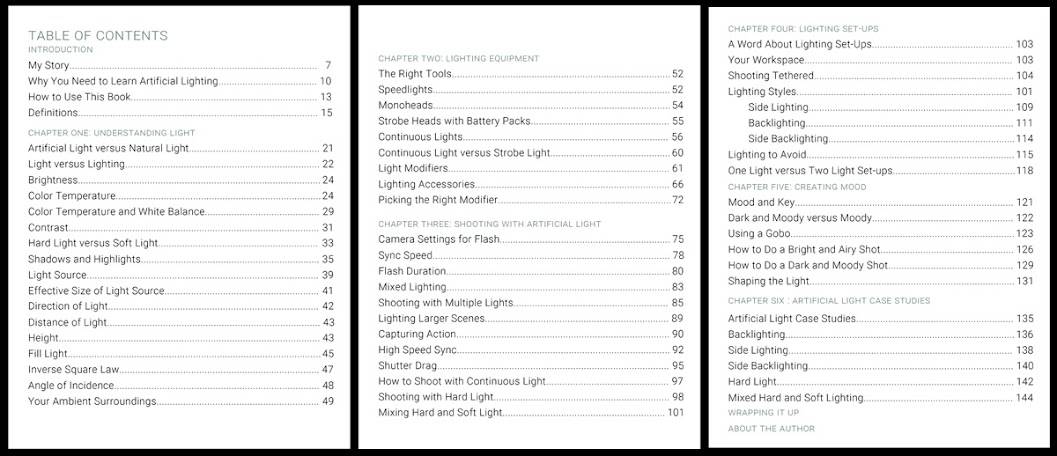
What BONUSES do I get with my purchase?
The Essential Gear Guide
Understanding Exposure
Principles of Light
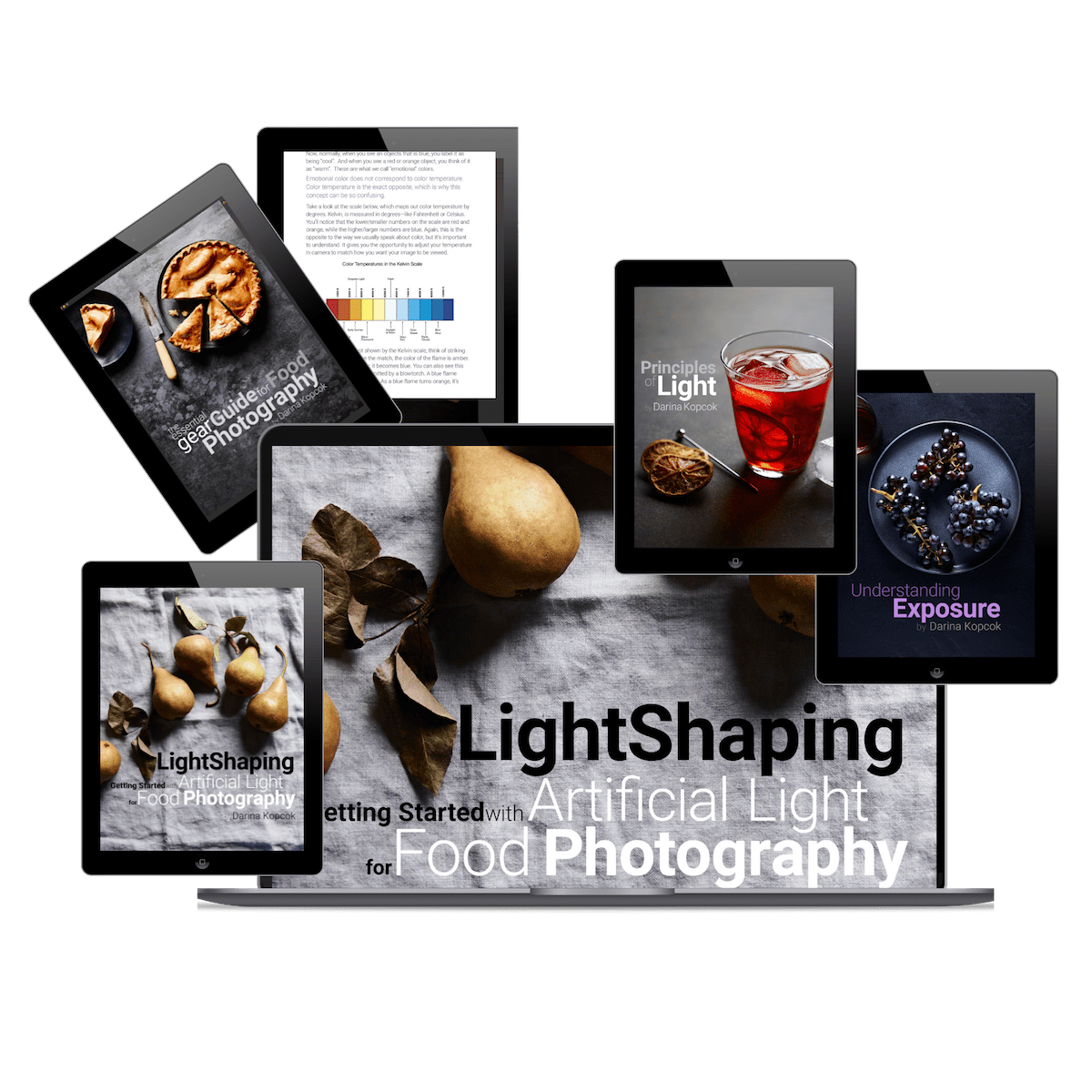
Frequently Asked Questions
Take control of your light!
Due to the digital nature of this product, no refunds will be issued.
